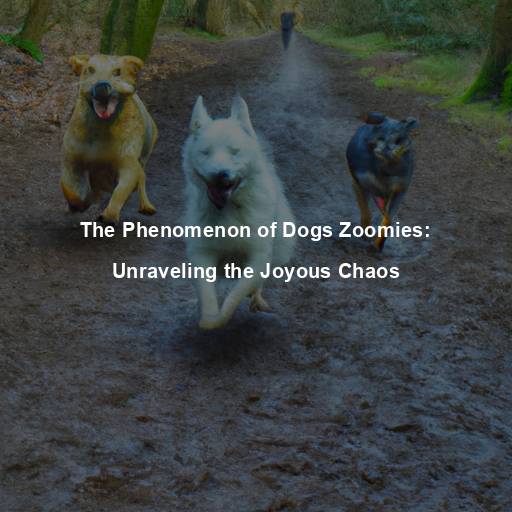Why Do Dogs Jerk in Their Sleep?
Last Updated on August 4, 2023 by Evan
Contents [hide]
- 1 The Mysterious World of Canine Dreams
- 1.1 The Science Behind Sleep Twitches
- 1.2 Dreams Unleashed
- 1.3 The Puppy Twitch Reflex
- 1.4 The Role of REM Atonia
- 1.5 Health Factors
- 1.6 The Emotional Aspect
- 1.7 Observing Your Sleeping Pooch
- 1.8 Unraveling the Dreamscape
- 1.9 The Sleep Environment
- 1.10 Recognizing Normal Twitches
- 1.11 The Emotional Connection
- 1.12 Observing Your Dog’s Sleep Patterns
- 2 Inquisitive Minds Unite: Unraveling the Canine Dream
- 3 Unraveling the Canine Dream: A Never-Ending Journey
- 4 FAQs – Why do dogs jerk in their sleep?
- 4.1 1 Why do dogs jerk in their sleep?
- 4.2 2 Is it normal for dogs to twitch or kick in their sleep?
- 4.3 3 What causes dogs to have dreams?
- 4.4 4 Should I wake up my dog if they are jerking a lot in their sleep?
- 4.5 5 Can dog jerking during sleep be a sign of a neurological problem?
- 4.6 6 Are certain dog breeds more prone to jerking during sleep?
- 4.7 7 How can I ensure my dog has a comfortable sleep environment?
The Mysterious World of Canine Dreams
Dive into the enigmatic realm of canine slumber as we unravel the bewildering phenomenon of dogs jerking and twitching while they snooze. Prepare to witness the mesmerizing quirks and captivating behaviors that these fascinating creatures exhibit during their dream-filled journeys. Join us on this perplexing adventure as we delve deep into the secrets of the canine subconscious and shed light on the puzzling reasons behind these involuntary movements that bewilder dog owners worldwide.
The Science Behind Sleep Twitches
To unravel the mystery of why dogs jerk in their sleep, we must first understand the science behind it. Like humans, dogs experience different stages of sleep, including rapid eye movement (REM) sleep and non-rapid eye movement (NREM) sleep. During REM sleep, which is the stage associated with dreaming, dogs’ brains become highly active, while their bodies enter a state of temporary paralysis known as REM atonia.
Dreams Unleashed
As the moonlight dances upon the slumbering dogs, a mysterious veil is lifted, revealing their hidden world of dreams. In the realm of REM sleep, their minds come alive, painting vivid landscapes of unknown adventures. The twitches and jerks that accompany their slumber, like ripples in a still pond, offer mere glimpses into the enigmatic tapestry being woven within. Alas, we are left in wonder, unable to unravel the secrets of their imaginings, forever lost in the depths of their canine minds.
The Puppy Twitch Reflex
In addition to dreaming, there is another reason why dogs may jerk in their sleep. This phenomenon is particularly common in puppies and is known as the “puppy twitch reflex”. This reflex is an involuntary response triggered by the dog’s developing nervous system. It is believed to be a natural part of their growth and development.
The Role of REM Atonia
During the restful slumber of our furry friends, an intriguing phenomenon occurs – REM atonia. This fancy term refers to the temporary paralysis that prevents our beloved canines from physically enacting their dreamworld adventures. Yet, just like the enigma of dreams themselves, there are moments when this paralysis doesn’t quite perform its expected duty, and dogs exhibit subtle twitches, tail wags, or even simulated sprints while in the depths of their sleep. It’s a curious blend of stillness and movement, perplexing our understanding of the sleeping canine mind.
Health Factors
As pet owners, we often witness our furry friends twitch or jerk in their sleep – it’s practically a part of their charm! However, it is imperative to stay vigilant and attuned to any shifts in their slumber scenarios. Should you observe a sudden surge or intensification in these nocturnal convulsions, it might just be the right time to seek professional guidance from your trusted veterinarian. Remember, excessive twitches or jerks during sleep can be our beloved pets whispering about potential health concerns, such as misbehaving neurons or an unbalanced sleep routine.
The Emotional Aspect
There’s more to doggy dreams than meets the eye! While scientists have their own hypotheses, some dog owners have a different take on the matter. They believe that those adorable twitches and jerks could be connected to their furry friend’s emotional journey in dreamland. And who can blame them?
Observing Your Sleeping Pooch
Next time you catch your dog in the act of dreaming, take a moment to observe their subtle movements. You might notice their paws twitching as if chasing a ball, their legs running as if chasing a rabbit, or even their tails wagging with delight. These glimpses into their dream world provide a fascinating insight into the complexity of their minds and the rich tapestry of experiences that shape their lives.
Unraveling the Dreamscape
As we continue our exploration into the enigmatic world of canine dreams, let’s delve deeper into the fascinating aspects that contribute to the jerks and twitches witnessed during our furry friends’ slumber. By understanding more about the nature of these movements, we can gain a greater appreciation for the complexity of their dream experiences.
The Role of Breed and Size
When it comes to sleep twitches, dogs are quite the diverse sleepers! This peculiar phenomenon varies not only in frequency but also in intensity, offering a burst of perplexity. It’s intriguing to note that smaller dog breeds tend to showcase more pronounced movements, as if they were chasing dream rabbits, while their larger counterparts display more subtle twitches, adding an air of mystique to their slumber. This peculiar behavior is likely to be influenced by a complex combination of factors such as muscle mass, brain size, and the enigmatic world of genetic predispositions.
Recreating the Day
It’s absolutely fascinating to think about what goes on in our furry companions’ minds during their sleep. One captivating theory proposes that when dogs twitch in their sleep, it’s their way of rehearsing or reliving their daily routine. Similar to how humans consolidate memories during slumber, it’s possible that dogs are processing and reinforcing their motor skills and behaviors through these mysterious movements. Perhaps these twitches are a window into their minds as their brains attempt to recreate the physical actions they experienced while awake.
The Sleep Environment
Dreams have their own whimsical ways of entertaining our furry friends during their sleep, but did you know that external surroundings can also have a curious impact on their slumber? It seems that crafting a cozy and secure sleep haven for your canine companion might just enhance the serenity of their rest and, perhaps, even quell the whimsical twitches that grace their snooze.
Temperature and Lighting
Maintaining an optimal temperature in your dog’s sleeping area is crucial. Dogs are sensitive to temperature, and excessive heat or cold can disrupt their sleep. Additionally, ensuring a dimly lit or dark room can help create an environment conducive to deep, uninterrupted sleep.
Providing a Cozy Bed
Investing in a comfortable and supportive bed for your dog is essential for promoting quality sleep. A well-padded bed that suits your dog’s size and sleeping preferences can provide them with a cozy and secure spot to rest, potentially reducing any discomfort or restlessness that may contribute to sleep twitches.
Recognizing Normal Twitches
While sleep twitches are generally considered normal, it’s important to be able to differentiate them from other potential issues. Understanding what constitutes a typical sleep twitch can provide peace of mind for concerned dog owners.
Duration and Frequency
Sleep twitches, those little involuntary movements that our furry companions often exhibit while snoozing, are usually harmless and short-lived. They come and go like hiccups, effortlessly blending into the tapestry of their sleep cycle. Yet, if you notice your loyal companion experiencing twitches that seem to last longer than usual, intensify in force, or become excessively frequent, it might be beneficial to seek guidance from a trusted veterinarian to ensure their well-being remains uninterrupted by any underlying health issues. Don’t let perplexity cloud your judgment – a professional opinion can offer the clarity you seek.
Lack of Disturbance
When it comes to those adorable sleep twitches that our furry companions sometimes display, we might wonder if they are causing any disruption or even waking up our dogs. The good news is that in most cases, our canine pals peacefully snooze right through their own movements, suggesting that these twitches don’t bother them at all. However, if you notice a pattern of your dog consistently waking up or seeming distressed during or after these twitches, it may be wise to reach out to the experts for guidance and reassurance about your pup’s overall health and happiness.
The Emotional Connection
Like us humans, our furry friends, dogs, are not devoid of emotions. This brings us to wonder about the enigmatic realm of their dreams. While we cannot delve into the vivid imagery and intricate narratives of their slumbering mindscapes, it is not outlandish to surmise that their gentle twitches and subtle movements could be manifestations of their emotional encounters.
Reliving Past Experiences
Dogs, those magnificent creatures, possess an uncanny knack for forging profound emotional bonds with their human counterparts and fellow creatures of the animal kingdom. It’s within the realm of possibility that their slumber grants them a magical gateway to revisit moments of unbridled joy, engage in social discourse with their furry peers, or perhaps navigate the murky waters of turbulent or harrowing encounters. Those endearing twitches and jerks witnessed during their blissful repose may very well be the corporeal manifestations of the heartfelt emotions intricately woven into these sensational experiences.
The Power of Scent
You wouldn’t believe the captivating world of scents that dogs delve into even while in dreamland! Their exceptional sense of smell takes on an extraordinary dimension as their slumber unveils an aromatic universe. Ever noticed those spontaneous twitches and movements during their snooze? Well, buckle up, because those might just be their way of embarking on sensational olfactory escapades in the mysterious realm of dreams.
Observing Your Dog’s Sleep Patterns
As a responsible and loving dog owner, observing your pet’s sleep patterns can provide valuable insights into their overall well-being. By paying attention to their sleep behaviors, you can better understand their individual needs and ensure they receive the care they deserve.
Sleep Duration and Schedule
Dogs, much like us, possess a fascinating assortment of slumber preferences, dictated by factors such as age, breed, and overall well-being. While sprightly puppies and their young pals often crave lengthier periods of rest, their senior counterparts tend to indulge in shorter naps and grapple with sporadic spells of alertness. In order to foster a harmonious sleep cycle that suits your furry companion’s individual needs, it is imperative to establish a steadfast routine catered exclusively to them.
Sleep Environment Monitoring
Taking the time to frequently monitor and evaluate your furry friend’s sleep surroundings is crucial for ultimate fido happiness and safety. It’s important to be attuned to any unexpected alterations in temperature, lighting, or ambient noises that could potentially disturb their sweet slumber. Furthermore, by occasionally examining the condition and appropriateness of their cozy resting spot, you can contribute to a peaceful and rejuvenating nocturnal adventure.
Inquisitive Minds Unite: Unraveling the Canine Dream
The enigmatic realm of canine slumber never ceases to bewilder both curious pet parents and avid researchers. Much like an enigmatic puzzle with missing pieces, the jerking motions of our furry friends during sleep remains an enigma that leaves us pondering. However, driven by an insatiable appetite for knowledge, we persistently venture into the labyrinth of canine dreams, unraveling the enigmatic patterns that cloak our beloved pets’ nocturnal behaviors.
Step into the mysterious world of our four-legged companions, where dreams and reality intertwine to create a captivating narrative. Join the captivating journey at PetsRoof.com, where we delve into the depths of the canine mind, unmasking the enigmatic world of their dreams. Be astounded as we unravel the secrets hidden within, shedding light on the complexities and intricacies of our furry friends’ sleeping adventures. Let the enchantment of the unknown sweep you away as we embark on this thought-provoking exploration, leaving no stone unturned in our quest to understand the depths of their slumber.
The Intricacies of Canine Dreaming
Step into the enigmatic world of canine dreams, where hidden dimensions of curiosity await to unravel the peculiarities behind the endearing twitches and jerks observed during our beloved furry companions’ slumber. Embarking on this insightful journey, we uncover a captivating tapestry of intricacies that mold their unique sleep patterns, illuminating the mystifying realm of their dream experiences. Delve into the bewildering complexities that lie within, and unlock a deeper comprehension of our canine friends’ enigmatic slumbers.
The Influence of Age and Development
The fascinating world of canine sleep patterns is a mesmerizing blend of age and development, weaving a tapestry of curious behaviors. Puppies, in their energetic pursuit of growth, showcase lively slumber filled with intense twitches. As their bodies and minds blossom in harmony, these adorable creatures experience a dance of dreams. On the flip side, our older, wiser companions embark on a more serene journey, where the frequency and vigor of their sleep twitches gently subside, reflecting the graceful embrace of maturity.
The Dream Content Puzzle
The mysterious realm of a dog’s dreams remains a subject of endless wonder and speculation. As we delve into the enigmatic depths of their slumber, a captivating tapestry of possibilities emerges. From epic adventures of frolicking and chasing to moments of profound connection with fellow creatures, their dreams embody a vibrant world that eludes our understanding. With each twitch and movement, their subconscious dances in ethereal realms, leaving us awe-struck and yearning for a glimpse into their perplexing nocturnal escapades.
Environmental Factors
The dreamy world of dogs goes beyond their own thoughts and emotions. Believe it or not, the sleep environment plays a vital role in shaping their dream experiences and those adorable twitches that often accompany them. So, why not create a cozy slumber sanctuary for your furry friend? By crafting a perfect sleep haven, you can enhance their overall well-being and possibly reduce any disruptions during their blissful snooze sessions.
Noise Levels and Disturbances
Creating a tranquil haven for our furry companions to drift into dreamland is paramount for their overall well-being. By curbing the cacophony in their sleeping abode, we can cultivate an environment where they can delve into the depths of slumber, undisturbed. Shielding them from jarring conversations and sudden noises ensures an uninterrupted passage into canine relaxation, fostering a harmonious atmosphere for their much-deserved rest.
Familiar Scents and Comfort
Dogs are highly sensitive to scents, and familiar smells can have a soothing effect on their sleep. Providing them with a comfortable and familiar sleeping area, complete with their favorite blankets or toys, can contribute to a sense of security and tranquility during sleep.
The Connection Between Genetics and Sleep Twitches
It’s absolutely fascinating how our four-legged friends, our beloved dogs, have their own share of mysterious sleep twitches. It turns out that genetics might hold the key to unraveling this peculiar phenomenon. Certain breeds, it seems, are more prone to experiencing these intense and frequent twitches while catching some Z’s due to good ol’ genetic factors. Isn’t it marvelous how by delving into a dog’s breed characteristics, we can gain a deeper understanding of their intriguing sleep patterns and behaviors?
Breeds with High Twitch Rates
Certain breeds, such as Pointers, Setters, and Retrievers, are known to exhibit higher rates of sleep twitches compared to other breeds. These breed-specific sleep behaviors can be attributed to their genetic makeup and inherent traits.
Health Considerations
Have you ever noticed those adorable twitches and little movements your furry companion makes while sleeping? While these sleep twitches are usually harmless and completely normal, it is important to keep an eye on your dog’s sleep patterns for any unexpected changes. Small alterations in their slumber routine could potentially be a red flag for underlying health concerns. To ensure your precious pooch’s overall well-being, it’s always a good idea to consult with a veterinarian who can help assess the situation and provide expert advice.
Neurological Conditions
Unusual sleep twitches in our furry friends can sometimes be an indication of more serious neurological issues lurking beneath the surface. Conditions like epilepsy or other seizure-related disorders may manifest themselves through prolonged or intense twitches while your dog slumbers. It’s crucial to seek expert guidance if any worrisome changes in their sleep behavior catch your attention. Keep a vigilant eye on your loyal companion’s health!
Sleep Disorders
Have you ever wondered if dogs can face sleep issues just like us? Well, it turns out they can! From sleep apnea to restless leg syndrome, our furry friends can also deal with disrupted sleep patterns and those annoying twitches. If you suspect your pup is having trouble catching some Z’s, don’t hesitate to reach out to a veterinarian for a thorough diagnosis and the right treatment.
A Window into the Canine Mind
Observing your dog’s sleep twitches can provide a window into their dream world and shed light on their emotional experiences. While we can’t fully comprehend the intricacies of their dreams, we can appreciate the depth of their emotional lives.
Emotional Responses in Dreams
Just like us, our furry friends have a whole emotional world hidden within the realm of dreams. It’s mind-boggling to think that when they close their eyes, they might be reliving exhilarating moments, having virtual playdates, or perhaps even confronting their own doggy demons. And those adorable twitches and wiggles they make in their sleep? Well, it could very well be their way of physically expressing all those rollercoaster emotions they’re experiencing in dreamland.
The Power of Positive Associations
It’s fascinating how dogs are not immune to the whims of their dreams. Just like humans, their dream content can be influenced by the positive experiences and associations they have had in their waking lives. Picture this: a dog frolicking in the park, chasing after a tennis ball, or strolling leisurely beside their beloved human. These enjoyable activities can seep into their dream realm, causing their little paws to twitch in sync with their dream-time playfulness.
Understanding Your Dog’s Sleep Patterns
Understanding and catering to the unique sleep patterns and behaviors of our beloved canine companions is crucial for their optimal health and happiness. By closely observing and taking note of their sleep habits, we can curate an environment that fosters deep and rejuvenating slumber, resulting in an overall sense of well-being for our furry friends. Through this attentive approach, we can delicately balance their individual needs, ensuring they experience the utmost comfort and tranquility during their precious moments of rest.
Sleep Position and Comfort
Have you ever noticed how dogs can sleep in such peculiar positions? It’s fascinating to observe the different ways our furry friends find comfort in their slumber. By paying attention to your dog’s preferred sleep position, you can gain valuable insights into what truly makes them feel at ease during their well-deserved rest. This knowledge allows you to create the perfect sleeping environment that caters to their unique needs and preferences.
Consistency and Routine
Maintaining a consistent sleep routine can contribute to better sleep quality for your dog. Establishing regular bedtimes and waking times, as well as incorporating calming activities before sleep, can help signal to your dog that it is time to unwind and prepare for restful sleep.
Unraveling the Canine Dream: A Never-Ending Journey
As we continue to explore the depths of canine dreams, we uncover more facets that shape these intriguing phenomena. While the specifics of why dogs jerk in their sleep may remain a mystery, our curiosity and dedication to understanding our furry companions drive us forward.
Welcome to PetsRoof.com, where the enchanting realm of the animal kingdom beckons. Prepare to be captivated as we delve into the mysteries and intricacies that intertwine humans and their beloved pets. From heartening anecdotes that warm the soul to sage wisdom from the experts, we invite you to immerse yourself in the awe-inspiring tales of our furry cohorts. Let us embark on a remarkable journey, where knowledge is boundless and the bond between humans and their loyal companions remains unwavering.
FAQs – Why do dogs jerk in their sleep?
1 Why do dogs jerk in their sleep?
Dogs may jerk or twitch while sleeping due to involuntary muscle contractions or a phenomenon known as “hypnagogic myoclonus.” These muscle movements are commonly observed during the REM (rapid eye movement) phase of sleep when dogs experience vivid dreams. Just like humans, dogs go through different sleep stages, and the twitching can be a result of their brain activity and muscle relaxation during these phases.
2 Is it normal for dogs to twitch or kick in their sleep?
It’s perfectly ordinary for our furry companions to experience little spasms, flutters, or sudden movements while catching some Z’s. These adorable actions generally pose no threat and simply signal that our pooches are in a blissful, deep slumber or perhaps indulging in a vivid, doggy dream. During rapid eye movement (REM) sleep, dogs often engage in involuntary motions like paw paddling, tail wagging, subtle vocalizations, and even occasional full-body jerks. Rest assured, these erratic movements play a crucial role in maintaining their cognitive well-being.
3 What causes dogs to have dreams?
Dogs, like humans, have dreams due to the brain’s activity during sleep. Just as our minds process daily experiences and memories during dreams, dogs can also engage in similar mental processes. Dreams in dogs are believed to serve a role in consolidating memories, learning, and emotional processing. It is suggested that dogs may even dream about activities, scents, or interactions they experienced while awake.
4 Should I wake up my dog if they are jerking a lot in their sleep?
It is generally advised not to wake dogs up when they are jerking or twitching in their sleep, as it can disrupt their sleep cycle and potentially leave them disoriented. Most of the time, these motions are not a cause for concern and are a normal part of the dreaming process. Unless your dog is displaying signs of distress or having seizures, it is best to let them sleep and allow their dreams to run their course.
5 Can dog jerking during sleep be a sign of a neurological problem?
In some rare cases, excessive or violent jerking during sleep can be associated with neurological issues. If your dog consistently exhibits intense muscle contractions, paddling, or appears distressed during sleep, it may be worth consulting a veterinarian. They can assist in determining if there are any underlying health conditions contributing to these abnormal behaviors.
6 Are certain dog breeds more prone to jerking during sleep?
While dog jerking during sleep can occur in any breed, some individual dogs may be more prone to these movements than others. It has been observed that smaller breeds, such as Chihuahuas and Miniature Pinschers, tend to display more intense twitching during sleep. However, there is no exclusive correlation between breed and jerking during sleep, as it varies from dog to dog.
7 How can I ensure my dog has a comfortable sleep environment?
To provide your dog with a comfortable sleep environment, you can consider providing a cozy bed or mat in a quiet area of your home. Ensure the temperature is suitable, and the area is free from disturbances. Regular exercise during the day can also help promote better sleep for your dog, as they will be physically tired when it is time to rest. Additionally, maintaining a consistent sleep routine can help establish healthy sleeping patterns for your furry companion.







